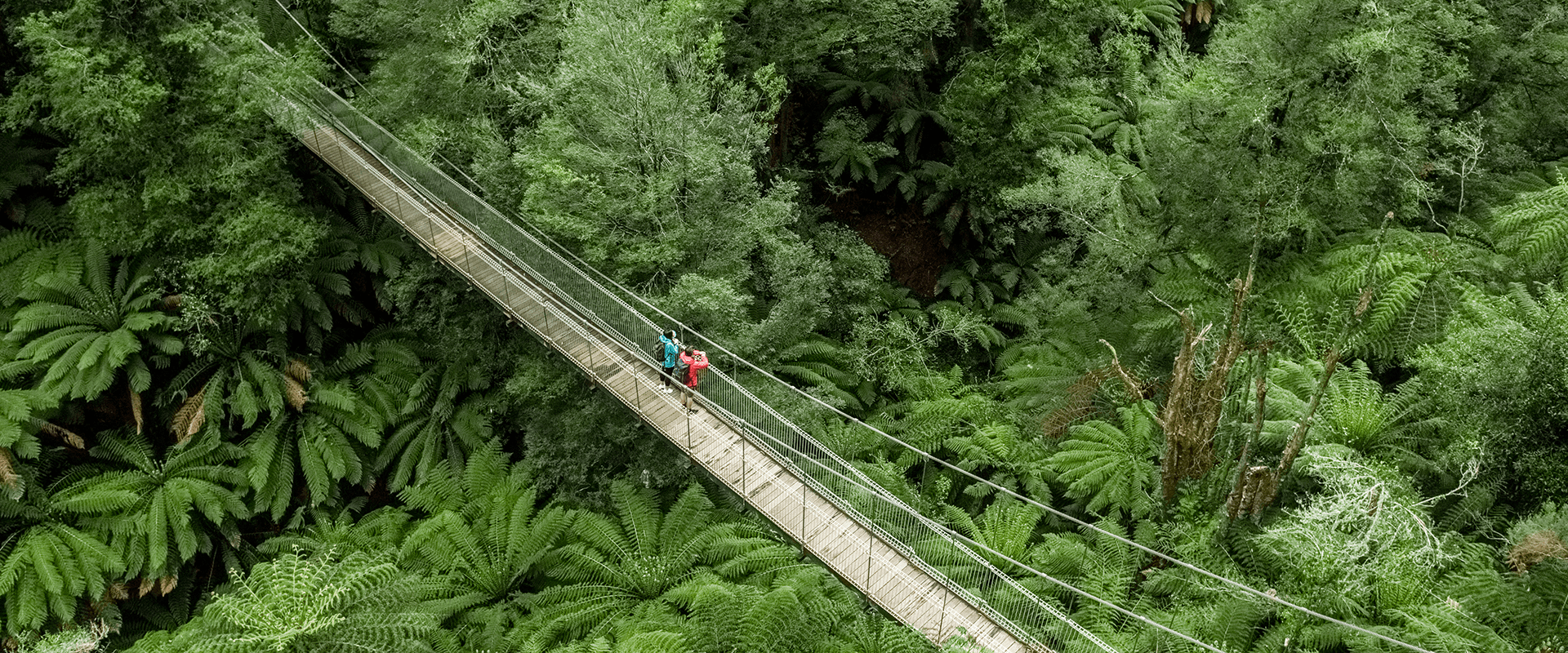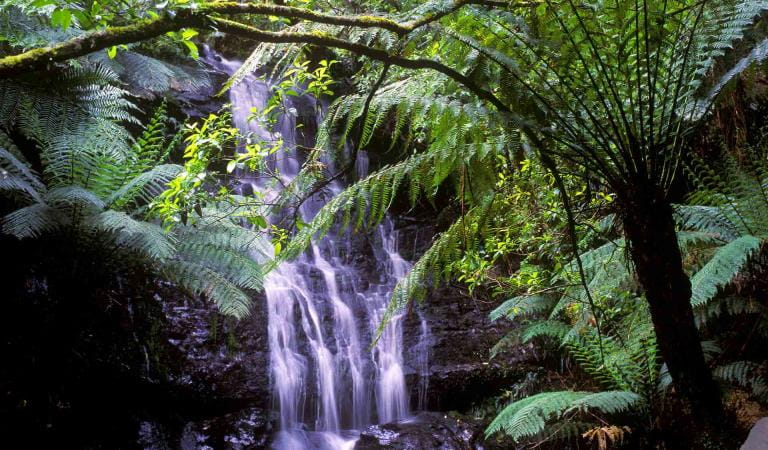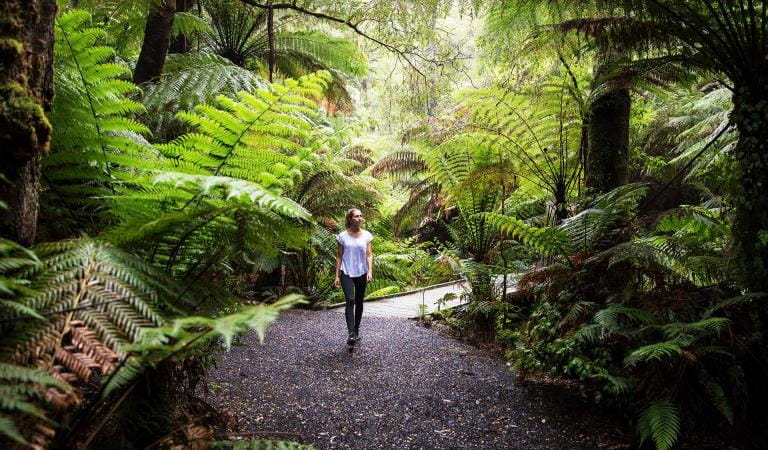Explore
Tarra-Bulga National Park

Tarra-Bulga National Park is one of the jointly managed parks within Gippsland. The Joint Management agreement recognises the fact that the Gunaikurnai people hold Aboriginal Title and maintain a strong connection to Country. As custodians of the land, they are the rightful people who speak for their Country. These parks and reserves are cultural landscapes that continue to be part of Gunaikurnai living culture. For more information on Joint Management, please visit the Gunaikurnai Traditional Owner Land Management Board and the Gunaikurnai Land and Waters Aboriginal Corporation.
Tarra-Bulga National Park on Brataualung Country, is highly significant to Gunaikurnai Traditional Owners due to its remarkable Aboriginal cultural heritage.
Known for its giant Mountain Ash trees, beautiful fern gullies and ancient myrtle beeches, Tarra Bulga in South Gippsland has some of the best examples of original cool temperate rainforests of the Strzelecki Ranges. Walk to the impressive Corrigan’s Suspension Bridge, which stretches through the rainforest canopy, affording spectacular views of the lush fern gully on the forest floor below.
In 1903 the Alberton Shire Council (now Wellington Shire) asked the State Government to reserve an area of forest near Balook as a public park, describing it as having 'fern gullies unequalled in any part of Victoria'. Twenty hectares were reserved and given the name Bulga, meaning mountain.
Six years later, 140 hectares were reserved in the Tarra Valley, with this park being named after Charlie Tarra, an Aboriginal man who guided the explorer Strzelecki and his party through Gippsland in 1840.
Following recommendations by the Land Conservation Council, the two separate National Parks were joined, and an enlarged and re-named Tarra-Bulga National Park, declared in June 1986, now covers 2,014 hectares.
Things To Do
Cultural Heritage Tarra-Bulga National Park
Walks in Tarra-Bulga National Park
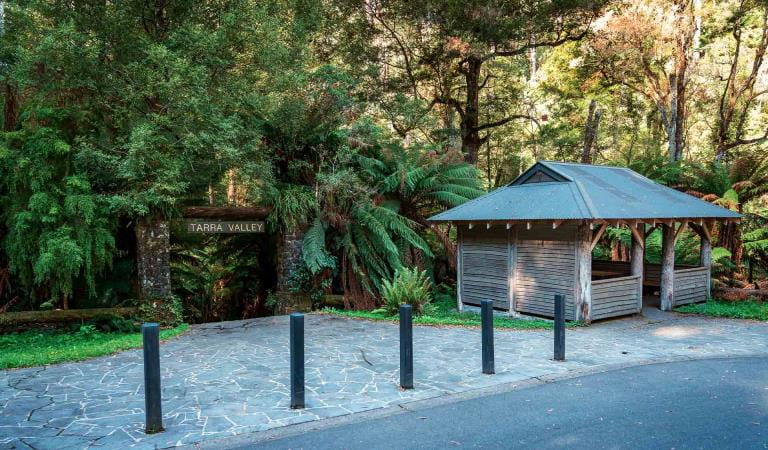
Picnicking at Tarra-Bulga
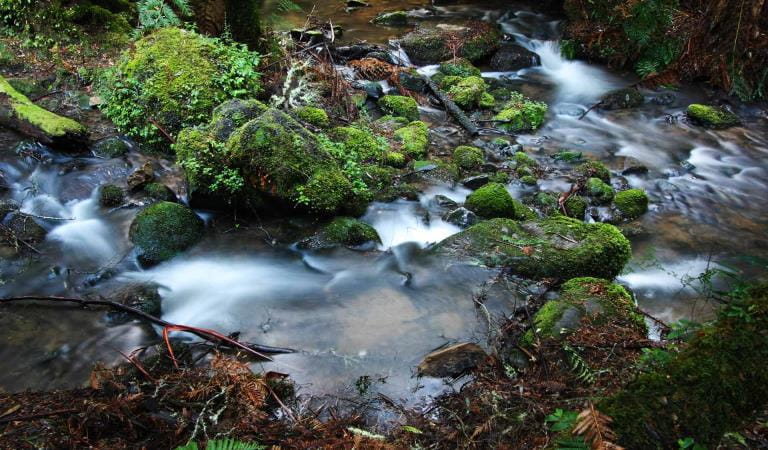
Photography and birdwatching
Tarra Bulga National Park
This area is well known for its wildlife. Keep an eye out for:
Tours and adventure experiences in parks
One of the best ways you can get into nature is with a Licensed Tour Operator.
There are more than 400 Licensed Tour Operators across Victoria who are ready and waiting to help you experience and connect with Victoria’s spectacular parks and waterways.
Discover more than 60 different types of nature-based experiences including hiking, mountain biking, boating, four-wheel driving, indigenous culture tours, birdwatching, surfing, diving and so much more.
Licensed Tour Operators know all the best places to go and will plan and prepare your visit to ensure you are safe and can enjoy your nature-based adventure to the fullest.
How to get there
Tarra-Bulga National Park
Alternatively, for the more adventurous, the park is located on the Grand Ridge Road and can be approached along this iconic road from east, starting at Carrajung, or west, starting at Strzelecki on the Warragul - Korumburra Road and travelling through Mirboo North. Take care if using this road, as it is unsealed and frequented by logging trucks.
When you're there
Need to know
Tarra-Bulga National Park
Accessibility
Balook Visitor Centre
The Balook Visitor Centre is designed for all abilities access. A toilet block with accessible facilities is located at the rear of the Centre. There is a sealed path to the toilet block, with a cubical in each of the men's and women's areas constructed to the standard for a wheelchair user.
There is a picnic table with wheelchair access, although on an unsealed surface.
The first 300 metres of the Lyrebird Ridge walking track, leaving from the Visitor Centre, is a flat gravel track and is accessible for people in wheelchairs or with prams. After the first 300 metres, the track has some slopes that would make it hard for unassisted wheelchair users.
Assistance dogs are welcome in Parks Victoria parks and reserves. Entry requirements apply for parks and reserves that are usually dog prohibited, such as national parks.
Change of Conditions
Nature being nature, sometimes conditions can change at short notice. It’s a good idea to check this page ahead of your visit for any updates.
-
Bulga Picnic Area (Tarra-Bulga National Park)
Bulga Park Picnic Area CLOSED
Bulga Park Picnic Area Road and Carpark are CLOSED until further notice. The road has been assessed by an engineer and deemed unsafe. Please access the Bulga Park Picnic Area via the Balook Visitors Centre carpark.
How we keep it special
Tarra-Bulga National Park is located on the Country of the Brataualung clan of the Gunaikurnai. It lies on a central part of the Gunaikurnai creation storyline where Borun, carrying his canoe, travelled from the mountains in the north to the place called Tarra Warackel on the coast south of the park, now called Port Albert (GLaWAC 2015).
The Gunaikurnai and Victorian Government Joint Management Plan provides a description of joint management strategies and actions that are specific to Tarra-Bulga National Park.
The Gippsland Plains and Strzelecki Ranges Conservation Action Plan provides directions for environmental conservation management across the diverse landscape, including Tarra-Bulga National Park. This covers the old-growth forests, wetlands, heathlands, coastal dunes and sandy beaches.


